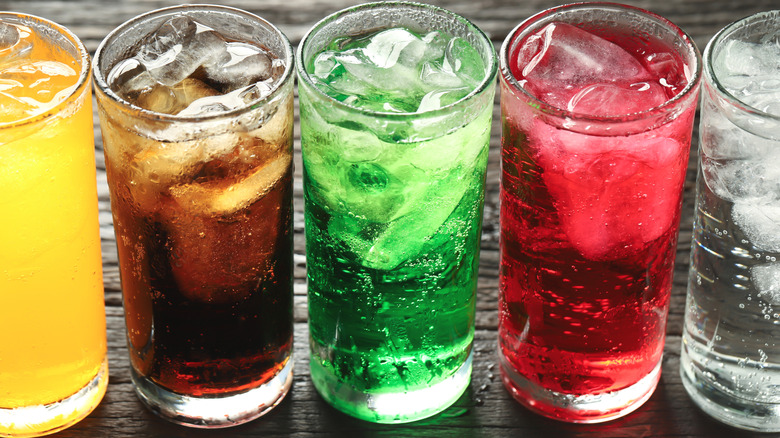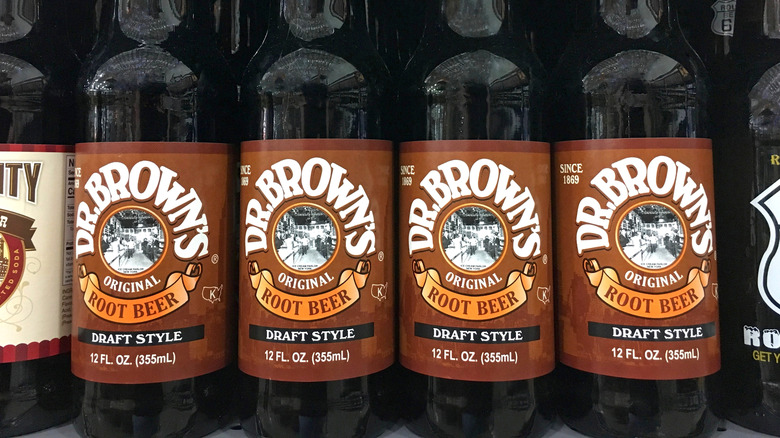This Classic Soda Brand Has Been A New York Staple Since 1869
Walk into pretty much any Jewish deli in New York and you'll find a few constants: towering pastrami sandwiches (an NYC classic), half-sour pickles, and cans or bottles of Dr. Brown's in the fridge. Since its 1869 introduction, Dr. Brown's soda has been woven into the fabric of New York life, standing as a nostalgic, refreshing symbol of neighborhood tradition.
The brand made its debut on the Lower East Side of Manhattan, in an era when soda was often sold as a tonic rather than a common drink. Early advertising for Dr. Brown's touted its alleged health benefits — a common strategy in the 19th century when carbonated beverages were promoted as cure-alls. (Dr. John S. Pemberton, for instance, invented Coca-Cola in 1886 and marketed it as a patent medicine — though the company denies these claims.)
According to legend, a physician developed the Dr. Brown's formula. Whether an actual Dr. Brown ever existed remains a mystery, but what's certain is that the kosher soda quickly found a loyal following, particularly among Jewish immigrant communities seeking kosher, caffeine-free alternatives to mainstream sodas.
Dr. Brown's soda is a deli icon
Cel-Ray is Dr. Brown's original standout. Made with celery seed extract, it walks a fine line between herbal and savory. Aptly nicknamed "Jewish champagne," Cel-Ray has held its own in deli culture since its 1869 launch. While its peppery flavor may baffle first-timers, longtime fans defend it fiercely — especially when paired with a salty sandwich on rye. Other beloved Dr. Brown's flavors include black cherry and cream soda. The former boasts a deep magenta hue and a fruit-forward punch with a whisper of vanilla, delivering a sweet, balanced profile. The latter is mellow and smooth, evoking corner stores of decades past. Root beer and ginger ale round out the lineup, each drawing on familiar notes from the golden age of soda fountains.
Despite changing consumer tastes and preferences across generations, the core identity of Dr. Brown's hasn't evolved much — and that's part of its charm. The packaging features retro fonts, modest label designs, and black-and-white illustrations of iconic New York landmarks, including the Statue of Liberty, the Brooklyn Bridge, the Central Park Carousel, and the Hotel Astor.
Dr. Brown's limited availability plays a major role in its appeal. You likely won't stumble upon it in just any grocery aisle — it's a drink you discover beside matzo ball soup and knishes. For New York's natives, transplants, and tourists alike, Dr. Brown's is a faithful companion to cured meats and an effervescent reminder that some things are worth preserving.

